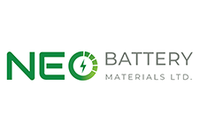3DSD: Creating Sustainable Housing via Waste Materials and 3D Printing
Using up to 60 percent renewable materials, 3D Sustainable Developments is making new advancements in 3D tech and housing.
The impact of housing development looms large on the environment.
According to the US Environmental Protection Agency, single-family housing developments have a significant impact on the environment. Similarly, Natural Resources Canada states that 17 percent of Canada’s secondary energy use comes from the housing sector.
Secondary energy is electricity and hydrogen that has been converted from primary energy sources such as solar energy and natural gas.
While a number of innovations in renewable energy are gaining momentum, the sustainability of building materials is often overlooked. Currently, the average American home lasts under 65 years, which has raised concerns about the viability and challenges of housing materials.
One company that is addressing this issue is 3D Sustainable Developments (3DSD), based in Bellingham, Washington. Using a combination of high-performance concrete and waste materials, 3DSD is focusing on making housing derived from materials that are renewable and durable.
As part of its proprietary technology, 3DSD is constructing dome structures made of these materials through 3D printing. Speaking with the Investing News Network (INN), CEO Commitment Israel and President and Director of Technology Integration Noah Israel discussed the development process and the future outlook for the company.
The interview has been edited for clarity and brevity. Read on for more on what the executives had to say.
INN: Can you tell me about your sustainable building process?
CI: We built a large-scale 3D printer for printing sustainable housing infrastructure, and it uses our own formulations of high-performance concrete that can be made using up to 60 percent waste material.
INN: Why did you want to get involved in this space?
NI: I’ve been a builder since the ’70s, in all aspects of it from below ground (and) up, including logging and generating various materials. I found that much of the materials available were getting lower and lower in quality. The longevity of homes, according to the National Association of Home Builders, is between 55 and 65 years.
We had the ancients building homes that have literally lasted thousands of years, and it made me really reflect on the sustainability of the homes that were going to be needed over the next generation. And so that was the impetus to look at the materials. In a review of some of the ancient Roman structures that have lasted thousands of years, I discovered that there were geopolymers and ceramic cements that have also been developed.
We developed our own formulations that have a much longer life and have been proven to withstand extremes where typical pouring cement has deteriorated. There are failing infrastructures based on standard pouring cement all over the country. So that means huge expenditures in replacing structures that are only a couple of generations old.
At the time, before 3D printing was a thing, I realized because of my experience in computer control manufacturing in the past that we had an opportunity to precisely place construction material exactly where it needed to be. This allowed us to create structures that would have a much longer economic life and be a lot more sustainable in the process.
INN: Can you tell me more about the materials that you’re using in this process?
NI: We’re using a combination of high-performance concrete that uses nanoparticles and some of the latest materials that are being introduced, developed and tested. We are using geopolymers, which are some of the ancient formulations that the Romans used. That’s been the basis of the material development.
CI: Our standard recipe is a high-performance concrete, and that’s called G-rock. It can withstand about 15,000 pounds per square inch (PSI). Compared to normal concrete, which is in a range of 2,800 to 4,000 PSI, it’s over three times stronger.
INN: Can you tell me about the sustainability attributes of your development process?
CI: We’ve gone the route of using dome structures because of our company’s research into the longevity of that shape. The natural shape can withstand natural disasters of all types, particularly earthquakes, hurricanes, tornadoes and wildfires, because of the concrete.
Our aim is to go into these places that are natural disaster prone and provide a full solution to be able to clean up waste and the devastation and convert it into the concrete. Currently landfills contain up to a little over 50 percent of construction and demolition waste.
Even in places in the Bahamas after the massive storm, there’s so much garbage and they’re considering just dumping that into the ocean. There’s so much waste. Our aim is to be able to go into these areas and take up this waste and convert it into mixes and build sustainable structures going forward, so that when the next hurricane, earthquake or wildfire hits, it’s not going to create the same kind of devastation.
INN: Can you tell me about your work in waste stream development?
NI: I’ve done projects including a series of experiments and product development with the interior department at the Yuma Desalination Plant. Under a grant with the interior department, we worked on viable concrete from the desalination sludge.
CI: Our standard recipes can contain up to 60 percent waste material. So we’re looking to partner with industrial producers of waste and with government organizations to repurpose large-scale waste streams in the areas of waste water desalination.
For example, steel manufacturing slag, mine remediation, construction and demolition waste and styrofoam — we want to take those kinds of materials in large quantities and convert them into high-performance building materials. Here, any of the toxic compounds and heavy metals are completely sequestered inside the material or are removed depending on the process and scale of the product.
INN: What are your plans going into the future for the company?
CI: Our long-term goals for the company are to license our machinery and our technology paired with our recipes and high-performing building materials. We want to license that technology worldwide to help address the vast housing shortage.
The United Nations Habitat estimates that we need three billion new houses in the next 10 years. We want to build structures ourselves in multi-housing developments and also be licensing our products so that qualified engineers and developers the world over can be putting our research and advancements in technology to use on a larger scale.
Don’t forget to follow us @INN_Technology for real-time news updates!
Securities Disclosure: I, Dorothy Neufeld, hold no direct investment interest in any company mentioned in this article.
Editorial Disclosure: The Investing News Network does not guarantee the accuracy or thoroughness of the information reported in the interviews it conducts. The opinions expressed in these interviews do not reflect the opinions of the Investing News Network and do not constitute investment advice. All readers are encouraged to perform their own due diligence.




